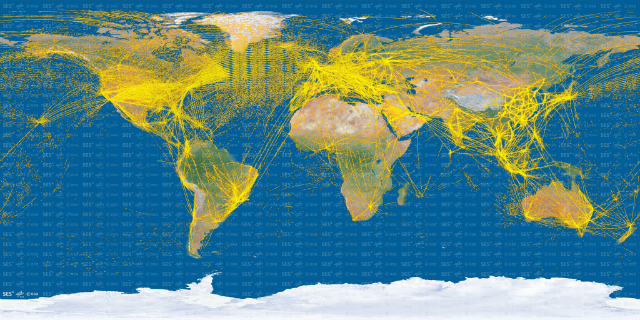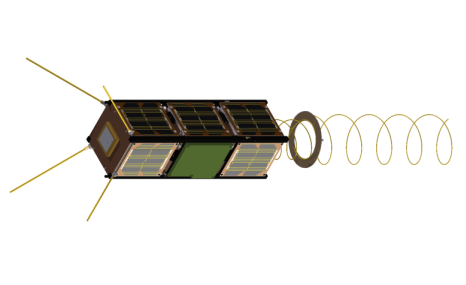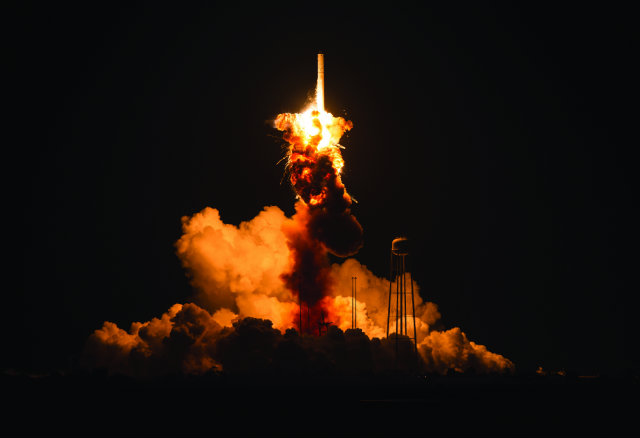Most of Europe could hear the sound of held breath being released in Denmark today as Japan’s fifth HTV unmanned resupply vehicle launched successfully from Tanegashima aboard an H-IIB launcher for the International Space Station.
Although three recent resupply missions have ended up in the sea or in pieces, a launch mishap today would have left the astronauts on board in no imminent danger of running out of food, air or water – but failure would have been a second disaster for Danish satellite maker GomSpace.
Whereas GomSpace’s GomX-2 satellite was destroyed along with an Orbital ATK Cygnus supply capsule when an ISS-bound Antares rocket blew up just above the launch pad at Wallops Island, Virginia, on 28 October 2014, its replacement looks set to reach orbit and be deployed from the ISS by Danish astronaut Andreas Mogensen.
Mogensen – Denmark’s first astronaut, flying a 10-day mission for the European Space Agency – is set to launch from Kazakhstan on 1 September.
GomX-3 could play a significant role in advancing aviation safety. The tiny, three-unit cubesat, measuring just 30x10x10cm (7.8x3.9ix3.9in) with its antennae packed for launch and deployment, contains equipment to continue testing the space-based reception of the automatic dependent surveillance - broadcast (ADS-B) signals emitted by airliners, which tell other aircraft and air traffic controllers their location, course and speed.
ADS-B signals allow the tracking of individual aircraft, but also give a picture of overall air traffic. These will be critical to the operation of advanced air traffic control systems, especially the North American NextGen and European SESAR systems. These aim to track all transatlantic aircraft in “4D” – three dimensions of space and one of time – and co-ordinate their flightpaths to save time and fuel, cut delays and increase effectively available air space by directing each aircraft to fly the shortest possible route.
However, space-based detection of ADS-B signals will be crucial to this plan, as ground-based receivers struggle to cope with signals from aircraft flying in remote areas. Some ocean routes cannot be covered by ground stations, and ground stations in very remote locations can be difficult to install, staff and maintain.
Fortunately, space-based ASD-B detection is promising – even though the signals are broadcast down and out but not up. GomX-1, launched in November 2013 by Dnepr rocket from the Yazny launch base in Russia, was one of the first satellites, despite its small size, to detect ADS-B signals in space. GomSpace describes the flight as a “very successful demonstration mission” with “perfect and accurate data reception”, and has given the larger GomX-3 craft an enhanced ADS-B receiver.
Also launched in 2013, ESA’s experimental small (less than 1m3) satellite, Proba-V, demonstrated the feasibility of tracking aircraft from orbit. Although its principal mission is to monitor vegetation growth, it produced the map below with less than two years’ data from an experimental ADS-B receiver on board.
As shown on the map below, over less than two years the single satellite – with a relatively small detection footprint of about 1,500x750km (930x470 miles) – has picked up 25 million position signals from more than 15,000 separate aircraft. ADS-B signalling capability will be mandatory on most aircraft operating in the USA and Europe by the end of the decade, but the signals are designed to be picked up by ground stations to supplement air traffic control radar, particularly where that radar is blind – such as over oceans.

Proba-V map of airline traffic
ESA
Back in May, Toni Delovski of Germany’s DLR aerospace agency, who is overseeing the Proba-V ADS-B experiment, said: “We’ve shown that detection of aircraft can work from space with no showstoppers, despite the fact that these signals were never designed to be picked up from space.
“In fact, the signals are beamed sideways from their host aircraft rather than omnidirectionally, making them hard to detect from orbit.”
There is, he noted, much work still to be done. “We are still working to improve the system,” he said. “Some makes of aircraft are more easily detected than others, which typically comes down to the age and make of their ADS-B systems.”
As for the astronauts aboard the ISS, the arrival of HTV and its 6,000kg (13,200lb) of supplies is clearly welcome. The October 2014 loss of the Antares-Cygnus mission was followed in 2015 by another two failures. A 28 April Russian launch attempt left its Progress supply ship out of communication in a wrong orbit that ended with an uncontrolled re-entry.
Then, in June, a SpaceX Falcon 9 rocket and its Dragon supply capsule were destroyed by apparent mechanical failure 139s after lift-off from Cape Canaveral.
The failures have left ISS crew members watching consumption of supplies, but they have not been in danger of running out. Japan’s HTV launch today was the sixth successful ISS resupply flight since the Antares loss.

GomX-3
ESA

Joel Kowsky/NASA/Rex
Source: FlightGlobal.com



















